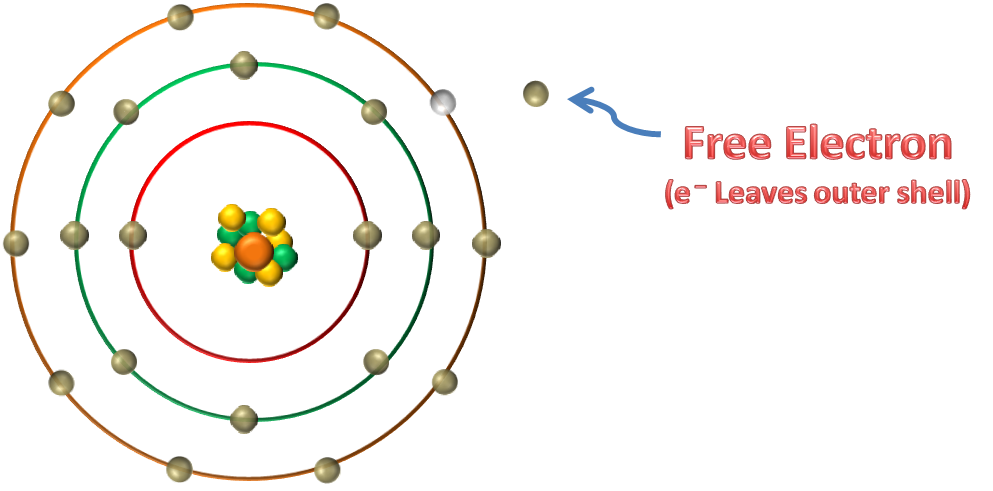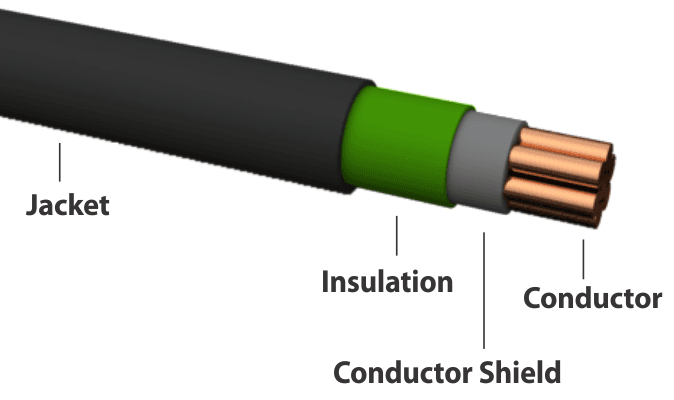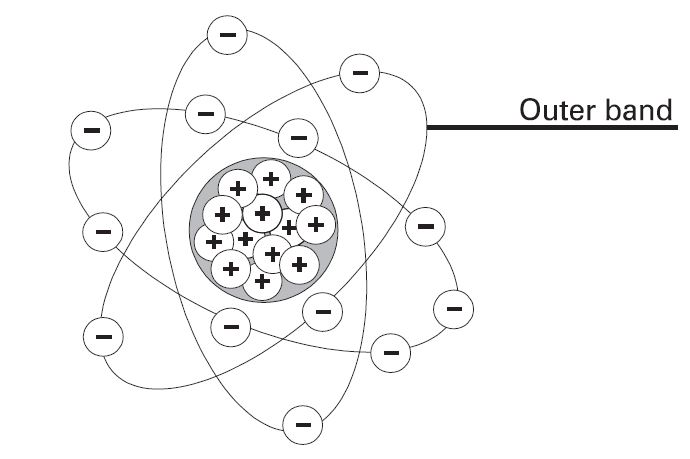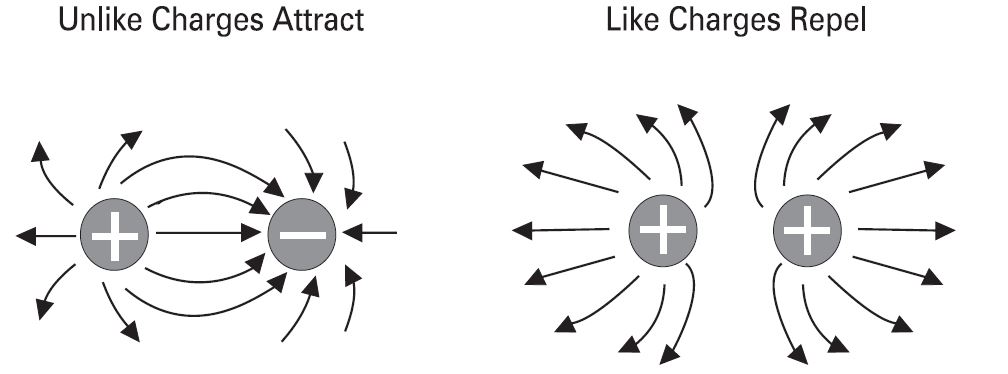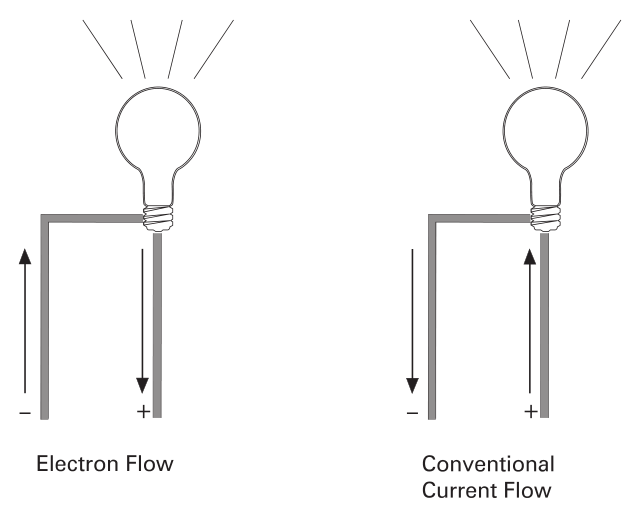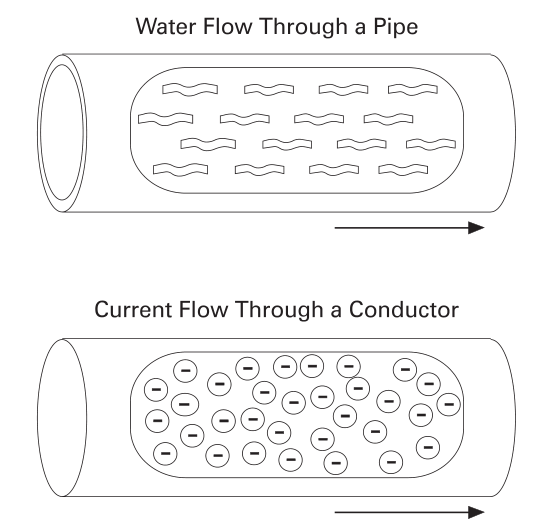Basic Electricity
Chapter 1
Basic Electricity
Objectives
Welcome to the Basic Electricity series. It covers discussions about electricity and is designed to prepare you to better understand electricity.
- Explain the difference between conductors and insulators
- Use Ohm's Law to calculate current, voltage, and resistance
- Calculate equivalent resistance for series, parallel, or series-parallel circuits
- Calculate voltage drop across a resistor
- Calculate power given other basic values
- Identify factors that determine the strength and polarity of a current-carrying coil's magnetic field
- Determine peak, instantaneous, and effective values of an AC sine wave
- Identify factors that affect inductive reactance and capacitive reactance in an AC circuit
- Calculate total impedance of an AC circuit
- Explain the difference between real power and apparent power in an AC circuit
- Calculate primary and secondary voltages of single-phase and three-phase transformers
- Calculate kVA of a transformer
The objectives listed above may sound strange to you. You may also wonder why you would need to know these things to sell Siemens Energy & Automation products. Developing a basic knowledge of electrical concepts, however, will help you to better understand customer applications. In addition, you will be better able to describe products to customers and determine important differences between products.
Electron Theory
Elements of an atom
All matter is composed of molecules which are made up of a combination of atoms. Atoms have a nucleus with electrons orbiting around it. The nucleus is composed of protons and neutrons (not shown). Most atoms have an equal number of electrons and protons. Electrons have a negative charge (-). Protons have a positive charge (+). Neutrons are neutral. The negative charge of the electrons is balanced by the positive charge of the protons. Electrons are bound in their orbit by the attraction of the protons. These are referred to as bound electrons.
Free electrons
Electrons in the outer band can become free of their orbit by the application of some external force such as movement through a magnetic field, friction, or chemical action. These are referred to as free electrons. A free-electron leaves a void that can be filled by an electron forced out of orbit from another atom. As free electrons move from one atom to the next an electron flow is produced. This is the basis of electricity.
Conductors, Insulators and Semiconductors
Conductors
An electric current is produced when free electrons move from one atom to the next. Materials that permit many elec- trons to move freely are called conductors. Copper, silver, aluminum, zinc, brass, and iron are considered good conductors. Copper is the most common material used for conduc- tors and is relatively inexpensive.
Insulators
Materials that allow few free electrons are called insulators. Materials such as plastic, rubber, glass, mica, and ceramic are good insulators.
An electric cable is one example of how conductors and insulators are used. Electrons flow along a copper conductor to provide energy to an electric device such as a radio, lamp, or a motor. An insulator around the outside of the copper conductor is provided to keep electrons in the conductor.
Semiconductors
A material in which electrons in the outermost shell are able to migrate from atom to atom when a modest amount of energy is applied. Such a material is partially conducting (can support electrical current flow), but also has properties of an insulator. The amount of current conduction that can be supported can be varied by "doping" the material with appropriate materials, which results in the increased presence of free electrons for current flow. Common examples are silicon and GaAs.
Basic Electricity
Concept of Charge
In all atoms, there exists a number of electrons that are loosely bound to its nucleus[1]. Such electrons are free to wander about, through the space under the influence of specific forces. Now when such electrons are removed from an atom it becomes positively charged. If excess electrons are added to the atom, it becomes negatively charged.
Unit of Charge
The charge on an electron is so small that it is not convenient to select it as the unit of charge[2]. In practice, coulomb is used as the unit of charge i.e. SI unit of charge is coulomb abbreviated as C. One coulomb of charge is equal to the charge on 625 × 1016 electrons, i.e.
Thus when we say that a body has a positive charge of one coulomb (i.e. +1 C), it means that the body has a deficit of 625 × 1016 electrons from normal due share. The charge on one electron is given by ;
Neutral state of an atom
Elements are often identified by the number of electrons in orbit around the nucleus of the atoms making up the element and by the number of protons in the nucleus. A hydrogen atom, for example, has only one electron and one proton. An aluminum atom (illustrated) has 13 electrons and 13 protons. An atom with an equal number of electrons and protons is said to be electrically neutral.
Positive and negative charges
Electrons in the outer band of an atom are easily displaced by the application of some external force. Electrons that are forced out of their orbits can result in a lack of electrons where they leave and an excess of electrons where they come to rest. The lack of electrons is called a positive charge because there are more protons than electrons. The excess of electrons has a negative charge. A positive or negative charge is caused by an absence or excess of electrons. The number of protons remains constant.
Attraction and repulsion of electric charges
The old saying, "opposites attract" is true when dealing with electric charges. Charged bodies have an invisible electric field around them. When two like-charged bodies are brought together, their electric field will work to repel them. When two unlike-charged bodies are brought together, their electric field will work to attract them. The electric field around a charged body is represented by invisible lines of force. The invisible lines of force represent an invisible electrical field that causes attraction and repulsion. Lines of force are shown leaving a body with a positive charge and entering a body with a negative charge.
Coulomb's Law
During the 18th century a French scientist, Charles A. Coulomb, studied fields of force that surround charged bodies. Coulomb discovered that charged bodies attract or repel each other with a force that is directly proportional to the product of the charges, and inversely proportional to the square of the distance between them. Today we call this Coulomb's Law of Charges. Simply put, the force of attraction or repulsion depends on the strength of the charged bodies and the distance between them.
Atomic Theory
The concept of charge is based on atomic theory [3]. An atom has positive charges (protons) in its nucleus and an equal number of electrons (negative charges) surround the nucleus making the atom neutral. Removal of an electron leaves the atom positively charged and the addition of an electron makes the atom negatively charged. The basic unit of charge is the charge on an electron. The mks unit of charge is the coulomb. An electron has a charge of 1.062 x l0-19 C.
When a charge is transferred from one point in the circuit to another point is constitutes what is known as electric current. An electric current is defined as the time rate of flow of charge through a certain section. Its unit is ampere. A current is said to be of one ampere when a charge of 1 coulomb flows through a section per second.
Mathematically,
If charge q is expressed in coulomb and time in second, 1 amp flow of current through a section is equivalent to approx. flow of 6.24 x 1018 electrons per second through the section. Yet another method of defining electric current (1 amp) is as the constant electric current in two infinite parallel conductors separated from each other by 1 m, experience a force of 2 x 10-9 N/m.
References
Basic Electricity
Electricity is the flow of free electrons in a conductor from one atom to the next atom in the same general direction. This flow of electrons is referred to as current and is designated by the symbol "I". Electrons move through a conductor at different rates and electric current has different values. Current is determined by the number of electrons that pass through a cross-section of a conductor in one second. We must remember that atoms are very small. It takes about 1,000,000,000,000,000,000,000,000 atoms to fill one cubic centimeter of a copper conductor. This number can be simplified using mathematical exponents. Instead of writing 24 zeros after the number 1, write 1024. Trying to measure even small values of current would result in unimaginably large numbers. For this reason current is measured in amperes which is abbreviated "amps". The symbol for amps is the letter "A". A current of one amp means that in one second about 6.24 x 1018 electrons move through a cross-section of conductor. These numbers are given for information only and you do not need to be concerned with them. It is important, however, that the concept of current flow be understood.
Units of measurement for current
The following chart reflects special prefixes that are used when dealing with very small or large values of current:
| Prefix | Symbol | Decimal |
|---|---|---|
| 1 kiloampere | 1 kA | 1000 A |
| 1 milliampere | 1 mA | 1/1000 A |
| 1 microampere | 1 μA | 1/1,000,000 A |
Direction of current flow
Some authorities distinguish between electron flow and current flow. Conventional current flow theory ignores the flow of electrons and states that current flows from positive to negative. To avoid confusion, this book will use the electron flow concept which states that electrons flow from negative to positive.
Further Readings
Basic Electricity
Electricity can be compared with water flowing through a pipe. A force is required to get water to flow through a pipe. This force comes from either a water pump or gravity. Voltage is the force that is applied to a conductor that causes electric current to flow.
Electrons are negative and are attracted by positive charges. They will always be attracted from a source having an excess of electrons, thus having a negative charge, to a source having a deficiency of electrons which has a positive charge. The force required to make electricity flow through a conductor is called a difference in potential, electromotive force (emf), or more simply referred to as voltage. Voltage is desig- nated by the letter "E", or the letter "V". The unit of measurement for voltage is volts which is designated by the letter "V".
Voltage sources
An electrical voltage can be generated in various ways. A battery uses an electrochemical process. A car?s alternator and a power plant generator utilizes a magnetic induction process. All voltage sources share the characteristic of an excess of electrons at one terminal and a shortage at the other terminal. This results in a difference of potential between the two terminals.
Voltage circuit symbol
The terminals of a battery are indicated symbolically on an electrical drawing by two lines. The longer line indicates the positive terminal. The shorter line indicates the negative terminal.
Units of measurement for voltage
The following chart reflects special prefixes that are used when dealing with very small or large values of voltage:
| Prefix | Symbol | Decimal |
|---|---|---|
| 1 kilovolt | 1 kV | 1000 V |
| 1 millivolt | 1 mV | 1/1000 V |
| 1 microvolt | 1 μA\V | 1/1,000,000 V |
Basic Electricity
Resistance is defined as the property of a substance due to which it opposes (or restricts) the flow of electricity (i.e., electrons) through it. The third factor that plays a role in an electrical circuit. All material impedes the flow of electrical current to some extent. The amount of resistance depends upon the composition, length, cross-section, and temperature of the resistive material. As a rule of thumb, the resistance of a conductor increases with an increase of length or a decrease of the cross-section. Resistance is designated by the symbol "R". The unit of measurement for resistance is ohms (Ω).
Conductors and Insulators
Metals (as a class), acids and salts solutions are good conductors of electricity. Amongst pure metals, ilver, copper and aluminium are very good conductors in the given order.Due to the presence of a large number of free or loosely-attached electrons in their atoms, these vagrant electrons assume a directed motion on the application of an electric potential difference. These electrons while flowing pass through the molecules or the atoms of the conductor, collide and other atoms and electrons, thereby producing heat.
Those substances which offer relatively greater difficulty or hindrance to the passage of these electrons are said to be relatively poor conductors of electricity like bakelite, mica, glass, rubber, PVC (polyvinyl chloride) and dry wood etc. Amongst good insulators can be included fibrous substances such as paper and cotton when dry, mineral oils free from acids and water, ceramics like hard porcelain and asbestos and many other plastics besides PVC It is helpful to remember that electric friction is similar to friction in mechanical terms.
Resistance circuit symbols
Resistance is usually indicated symbolically on an electrical drawing in one of two ways. An unfilled rectangle is commonly used. A zigzag line may also be used.
Resistance can be in the form of various components. A resistor may be placed in the circuit, or the circuit might contain other devices that have resistance.
Units of measurement for resistance
The following chart reflects special prefixes that are commonly used when dealing with values of resistance:
| Prefix | Symbol | Decimal |
|---|---|---|
| 1 kiloohm | 1 kΩ | 1000 Ω |
| 1 milliohm | 1 mΩ | 1/1000 Ω |
| 1 microohm | 1 μΩ | 1/1,000,000 Ω |

